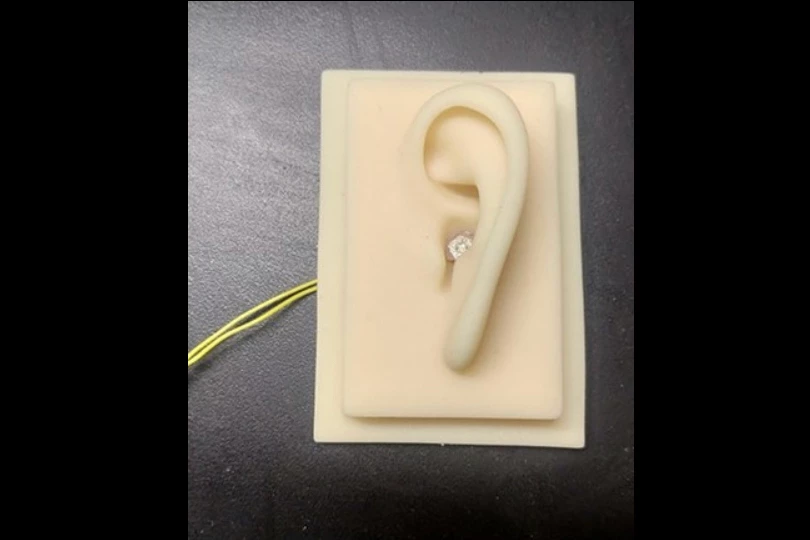Although hearing aids do make life easier for many people, their limited battery life can be problematic. Scientists have set about addressing that shortcoming, by designing a hearing aid that requires no batteries.
Currently in development at China's Huazhong University of Science and Technology, the prototype device incorporates a spongey material with both piezoelectric and triboelectric qualities. Piezoelectric materials produce an electrical current when subjected to mechanical stress, while triboelectric devices generate an electrical charge in one material by allowing it to come in and out of contact with another material.
The scientists created their piezo-triboelectric material by coating barium titanate nanoparticles with silicon dioxide, mixing those particles into a liquid conductive polymer, then drying the mixture into a thin, flexible membrane. An alkaline solution was then used to dissolve the silicon dioxide shells of the nanoparticles, leaving those particles sitting loosely within holes in the polymer matrix.
After the membrane was sandwiched between two thin metal grids, it was subjected to sound waves. Those waves caused the entire membrane to vibrate back and forth, generating an electrical current via the piezoelectric effect. Additionally, as the nanoparticles bounced off the walls of their hollow polymer chambers, a triboelectric charge was generated – the latter boosted the membrane's total electrical output by 55 percent, as compared to what would have been possible via piezoelectricity on its own.
The team tested the device by mounting it inside a scale model of a human ear, then playing music into that model. When the electrical signals produced by the prototype were converted into a digital audio file, the result was found to sound very much like the original music. Further testing indicated that the device is sensitive to a wide acoustic range, so it should be capable of picking up most voices and other sounds in the human range of hearing.
A paper on the research, which is being led by Yunming Wang, was recently published in the journal ACS Nano.
Source: American Chemical Society




